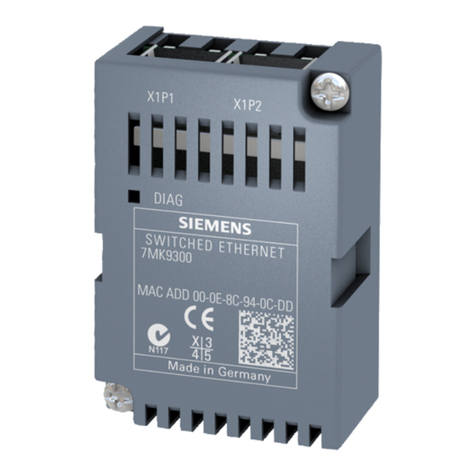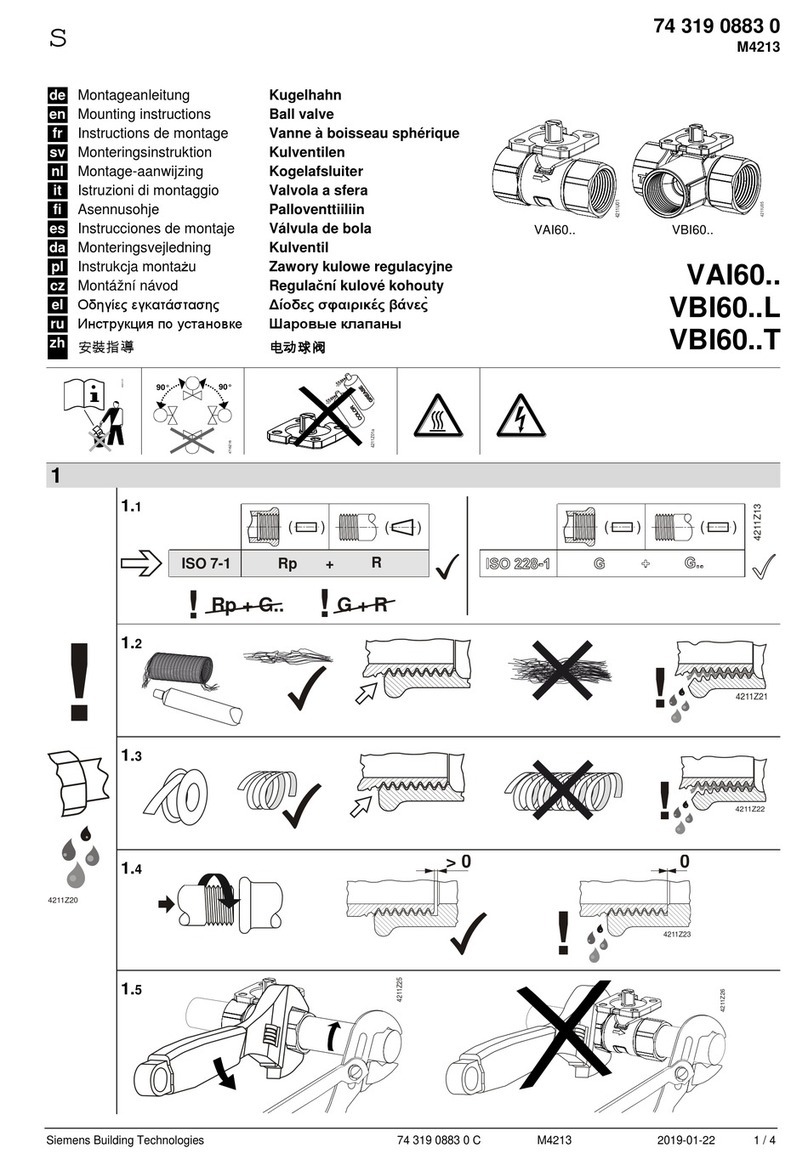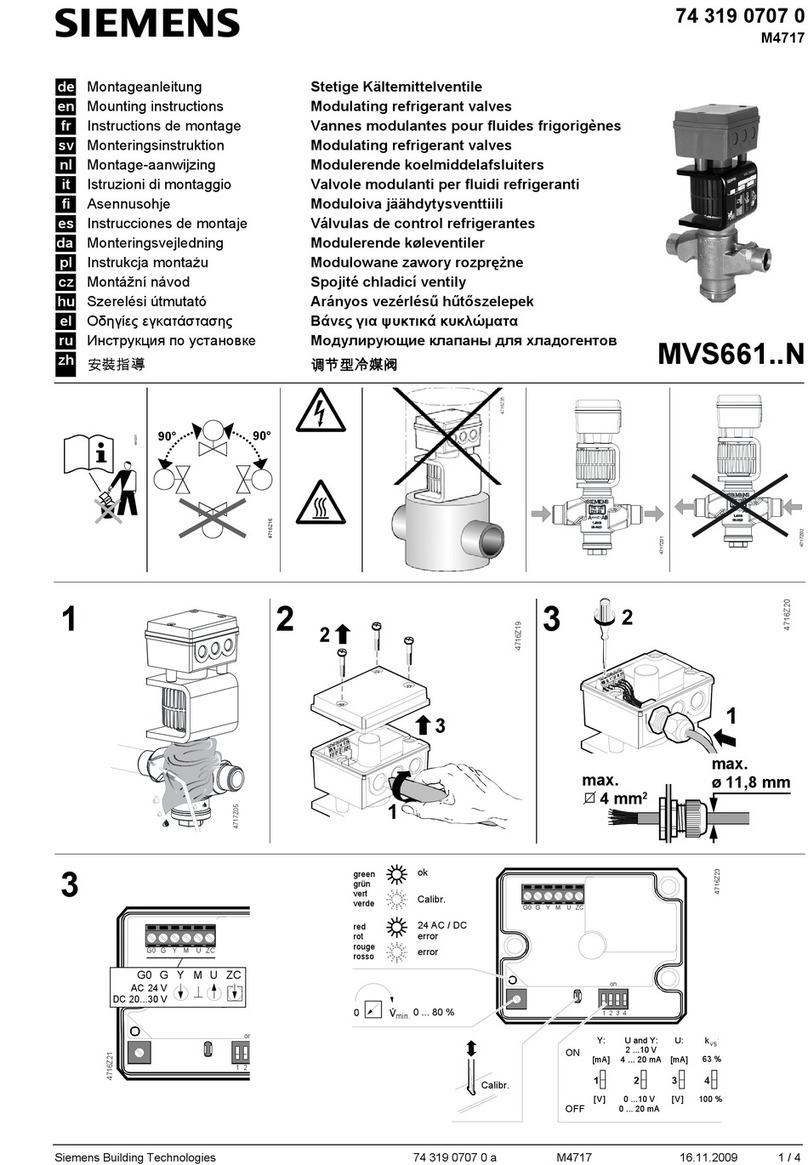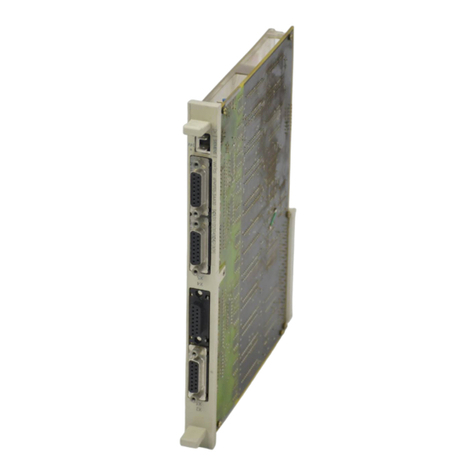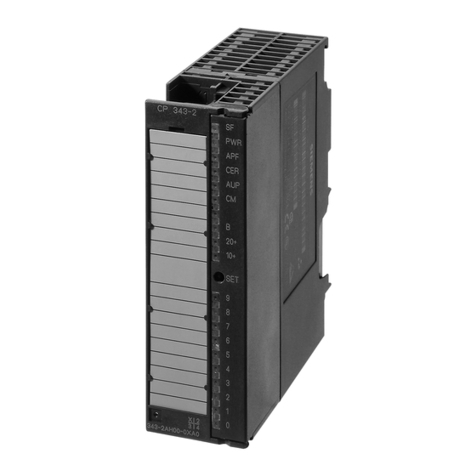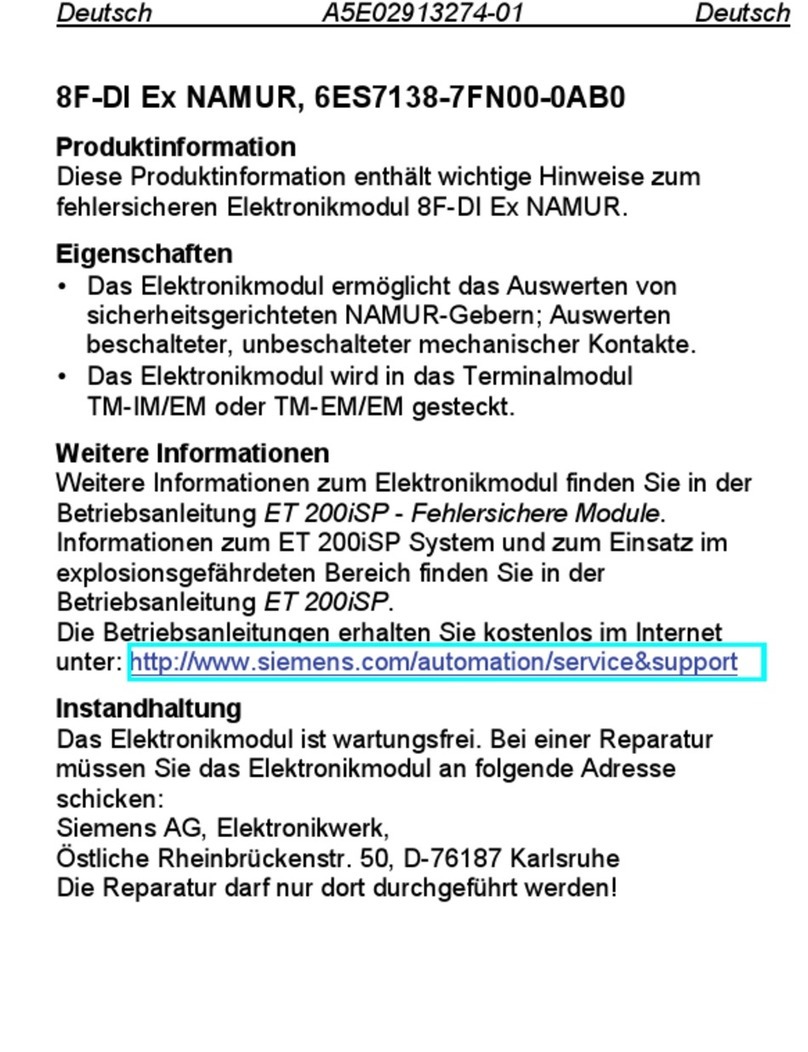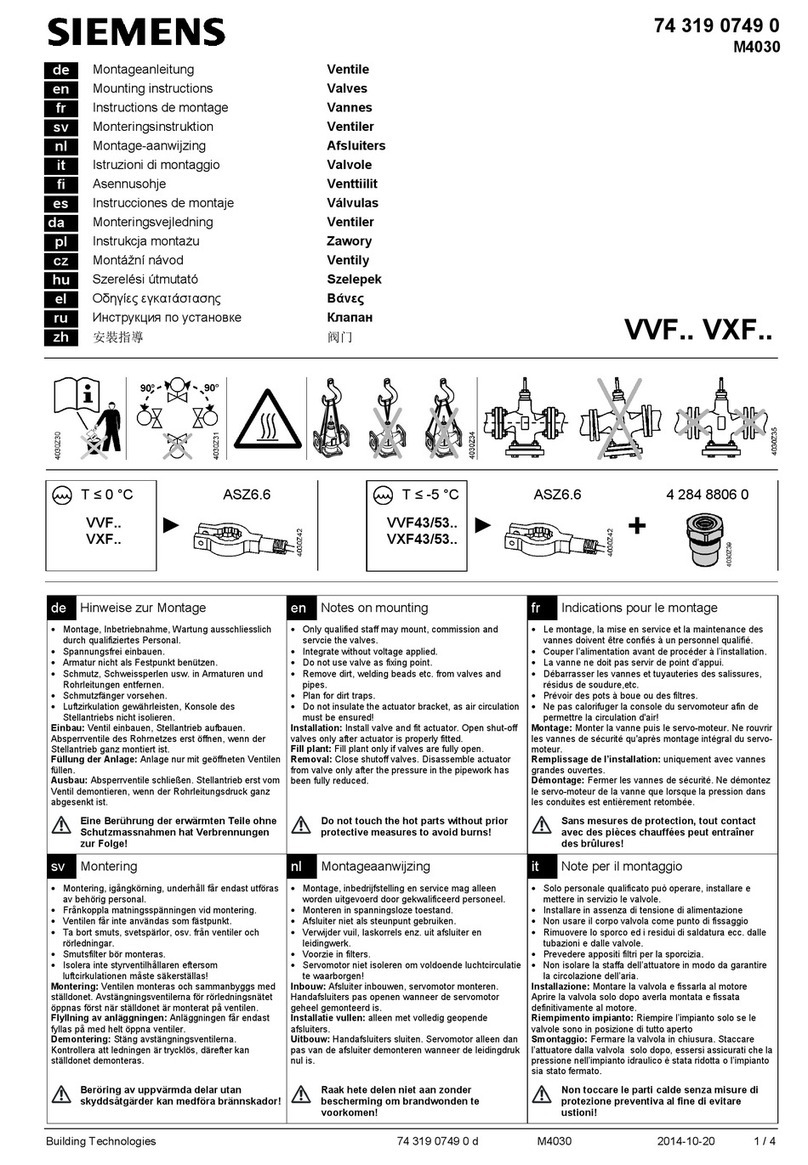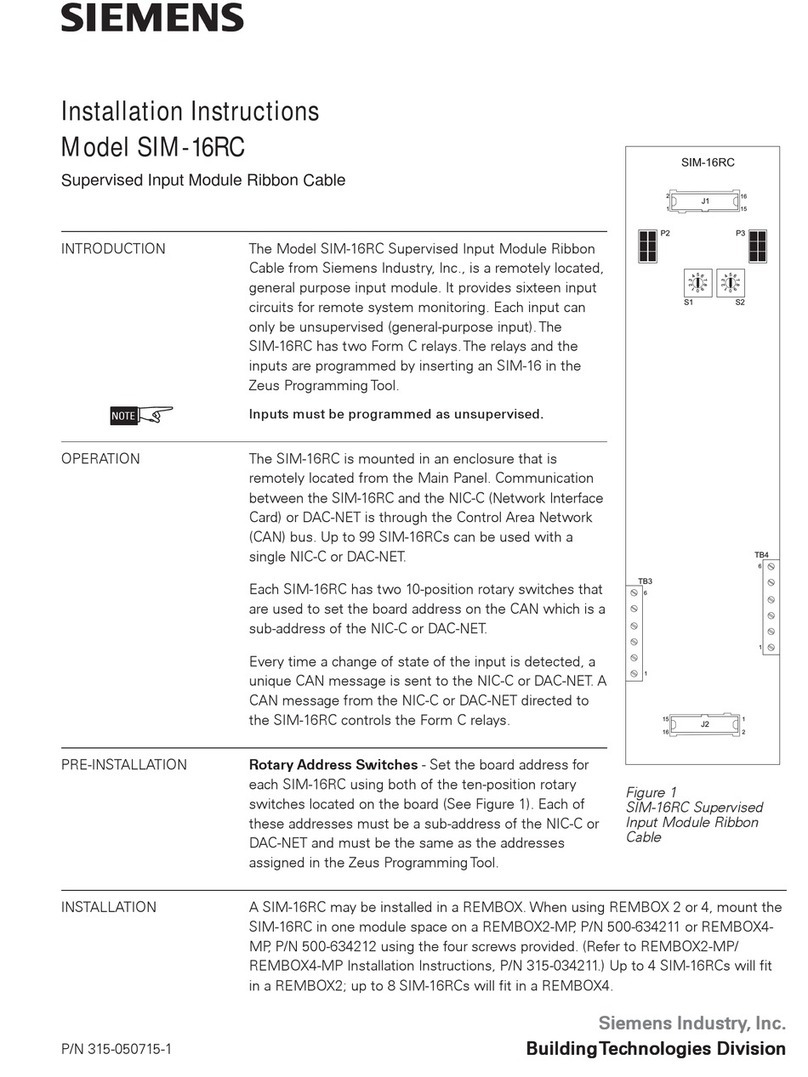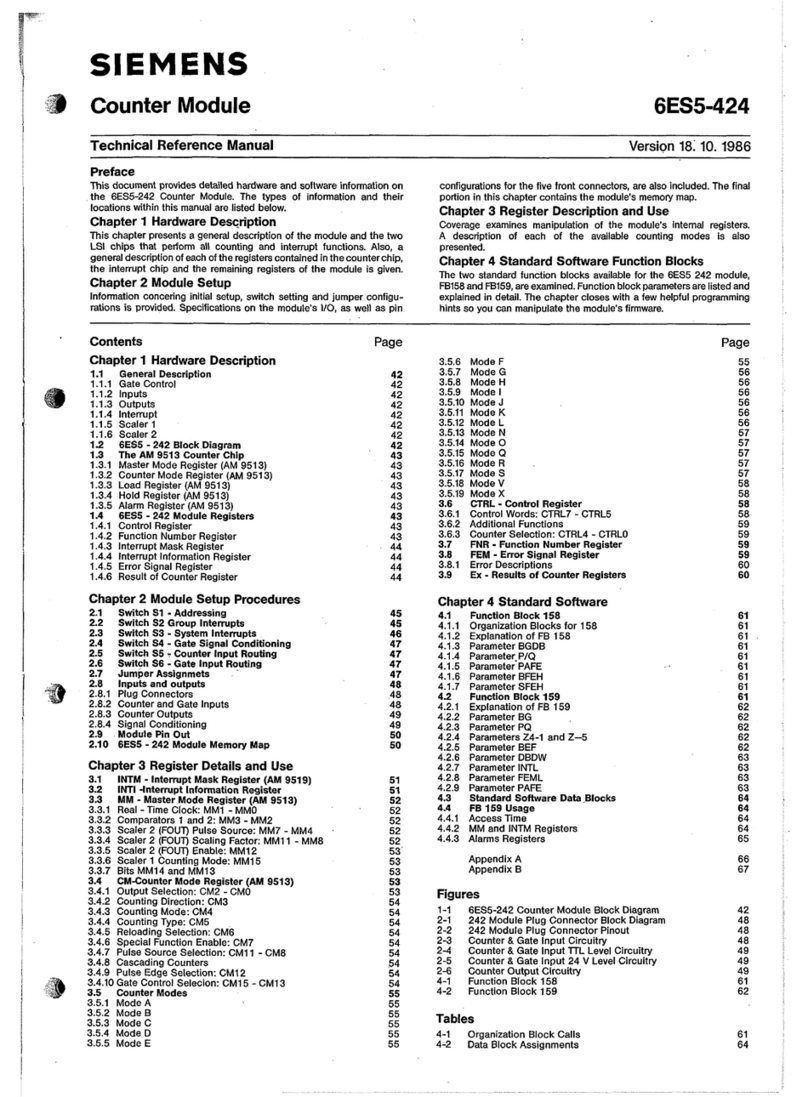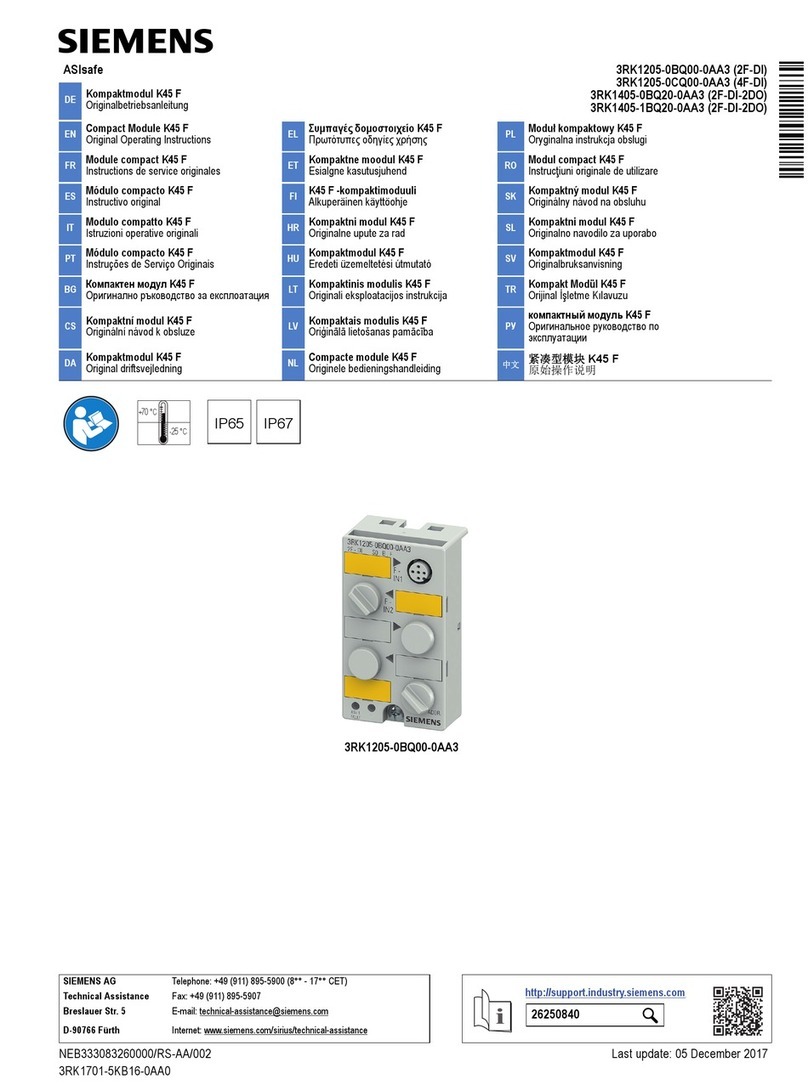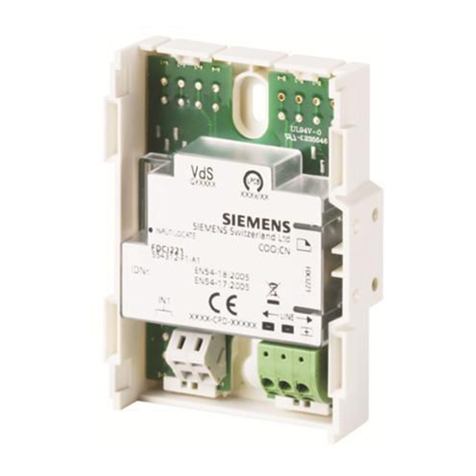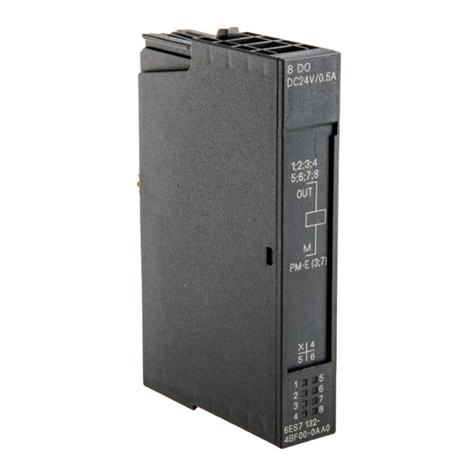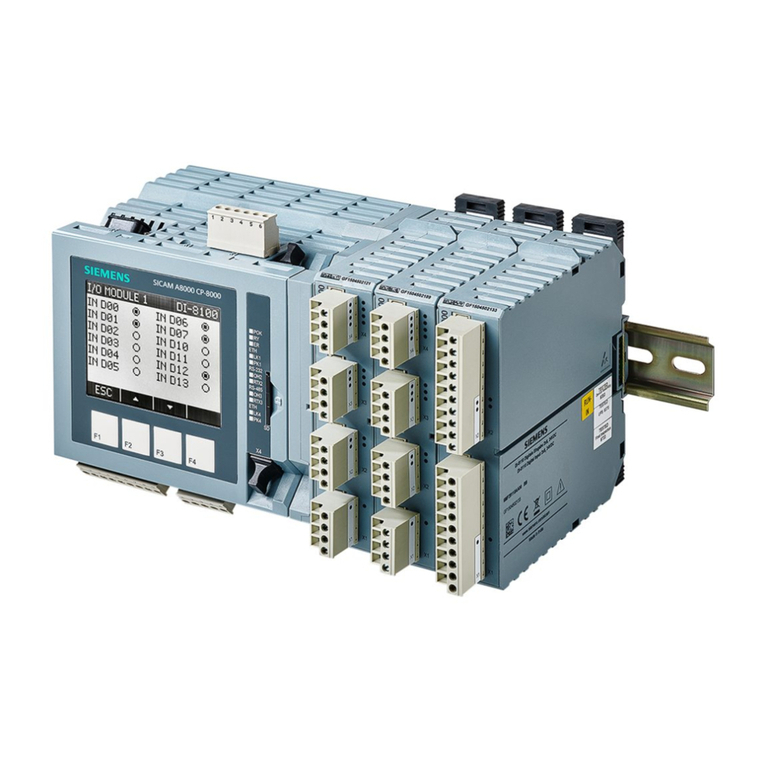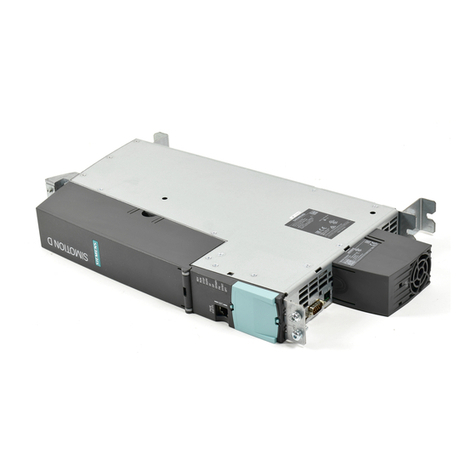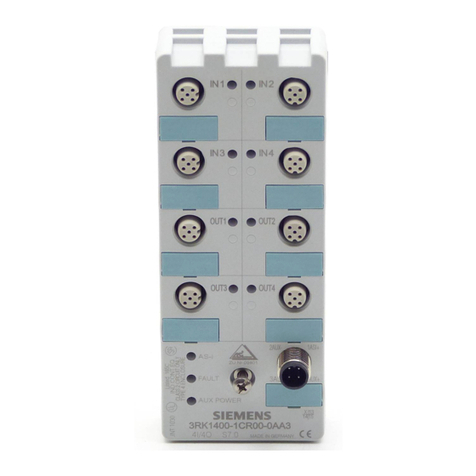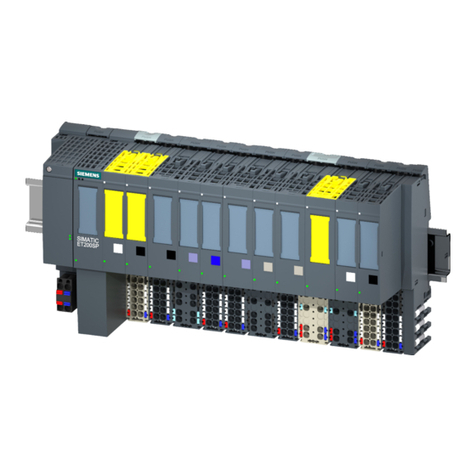
2/54
Siemens TX-I/O™ Module system – Functions and operation CM110561en_08
Building Technologies Contents 2018-10-25
Contents
1Introduction .................................................................................................3
1.1 Revision history.............................................................................................3
1.2 Key target groups..........................................................................................3
1.3 Contents and validity of this manual .............................................................3
1.4Other applicable documents .........................................................................3
1.5 Before you start.............................................................................................4
1.6 TX-IO™ terms and definitions.......................................................................5
1.7 Overview of TX-I/O™ functions.....................................................................6
2Indicators and operator controls ...............................................................7
2.1 Overview (example: super universal module) ...............................................7
2.2 LED indicators...............................................................................................7
2.2.1 Module status LEDs ...................................................................7
2.2.2 I/O status LEDs ..........................................................................8
2.2.3 LCD display ................................................................................8
2.3 Local override................................................................................................9
2.3.1 Override buttons.........................................................................9
2.3.2 Override status LED .................................................................10
2.3.3 Priority ...............................................................................10
2.4 Address key ................................................................................................10
2.5 Function of the modules within the I/O subsystem......................................10
2.6 Fault messages...........................................................................................11
3Digital input functions ..............................................................................12
3.1 Status indication, maintained contact (BI NO, BI NC / D20, D20R) ...........12
3.2 Status indication, pulse contact (BI Pulse NO / D20S) ..............................14
3.3 Status indication, pulse contact (P-Bus-BIM) (D20S, realized with BI Static)15
3.4 Pushbutton input (BI Push NO, BI Push NC) ..............................................17
3.5 Multistate input maintained contact (MI Switch)..........................................20
3.6 Counting, pulse contact (CI Mech (10/25 Hz), CI El (100Hz) / C)...............22
4Analog input functions .............................................................................24
4.1 Measurement ..............................................................................................24
5Digital output functions............................................................................26
5.1 General information on the digital outputs ..................................................26
5.2 Maintained contact, switchover (BO Relay NO / NC 250V / Q250) ............29
5.3 Maintained contact, triac (BO Triac NO / NC) .............................................31
5.4 Maintained contact, bistable (BO Bistable NO / NC)...................................32
5.5 Pulse, on/off (BO Pulse On-Off / Q250-P250A-P) .....................................34
5.6Pulse (BO Pulse).........................................................................................36
5.7 Multistate maintained contact (MO Steps / Q-Mx) .....................................37
5.8 Multistate pulse (MO Pulse / Q250-Px) .......................................................40
5.9 Three-position control signal (BO 3-Pos Relay, BO-3-Pos Triac / Y250T)) 42
5.10 PWM Pulse width modulation (BO PWM, with triac) ...................................45
5.11 Blinds control (BO Blinds Relay) .................................................................47
6Analog output functions...........................................................................50
6.1 Proportional control signal...........................................................................50
7Default functions, disabling function......................................................52
7.1 Null function ................................................................................................52
7.2 Default functions .........................................................................................52
8Table of the parameters that can be set (example: Desigo / CFC) .......54
